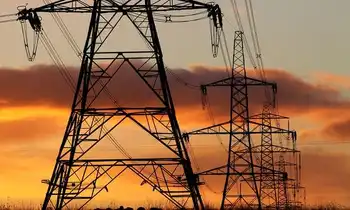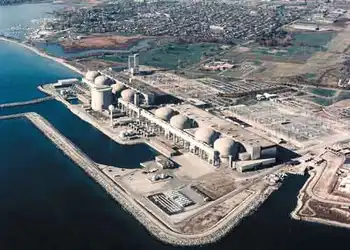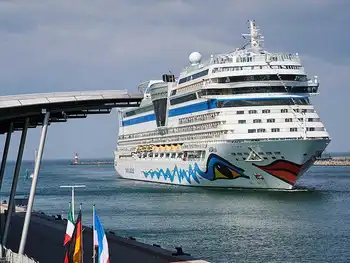Safety issues linger as reactors shrink in size
MOSCOW, RUSSIA - When the Soviet Union introduced its Alfa class submarine — at the time, the world’s fastest — the subs were the bane of American sailors. Now, the reactors that powered those submarines are being marketed as the next innovation in green power.
Environmentalists say the technology is outdated and potentially dangerous, and marketing it as green energy is an abuse of nuclear powerÂ’s good green name.
The Russians are not alone in pushing the idea that the next generation of nuclear reactors should have more in common with the small power plants on submarines than the sprawling installations of today.
The kinds of marine reactors the Russians are promoting, though, also happen to create a byproduct — used fuel — that no one knows how to handle. Right now, that spent fuel is being stored at naval yards in the Russian Arctic.
In most nuclear facilities, the used fuel, which is highly radioactive, is removed from the reactor and stored in a pool of water. But in the Soviet submarine model currently advanced by a Moscow company, the spent fuel ends up frozen along with the reactor and stored away. No engineering solution has been devised yet to decontaminate the fuel.
In fact, the technology caused a number of mechanical accidents when it was used in Soviet submarines from the 1970s until the early 1990s.
Kirill Danilenko, the director of the Russian company, Akme Engineering, said that the technology could be made safe, with no greater risk of meltdown than that at a larger nuclear plant. His vision is that small reactors will become so common that utilities can connect them and “build power plants like Lego sets.”
The promise of miniature reactors powering homes, offices and schools is still years from being realized. The first Russian design, a pontoon-mounted reactor intended to be floated into harbors in energy-hungry developing countries, is already being built. But most promoters expect small reactors to come online at the end of this decade.
The plans are going ahead in Russia and elsewhere in the face of criticism that a diffuse nuclear infrastructure — the idea that many midsize cities, for example, could have their own small reactor — is inherently risky.
But once the science is perfected, such reactors are potentially far cheaper to build for every unit of electricity generated than traditional nuclear power plants.
This is no small matter as capital expenses are the largest cost for nuclear power, making it more competitive with coal.
Around the world, much of the nuclear industry is embracing the tried-and-true economics of serial production. In serial production, reactor cores, like Ford cars, would be rolled off an assembly line, then shipped to the site of a plant. They could be used separately or as modules for a more powerful generator. This would be possible, however, only if a reactor were small enough to fit on a railroad car.
American companies are promoting nine designs for small reactors, according to the Nuclear Energy Institute, a trade group in Washington. The International Atomic Energy Agency, the Vienna group overseeing civilian nuclear power, has estimated global demand for small nuclear reactors could reach 500 to 1,000 reactors by 2040.
The category is defined as reactors making less than 300 megawatts of electricity, or the amount needed to power 300,000 American homes. That is roughly a quarter of the energy output of big reactors.
Small reactors have other advantages, too. They would fit the existing steam-generating equipment in old coal plants, for instance, making it easier to put nuclear facilities in current coal-burning energy plants. And small reactors have at least one nonproliferation benefit over their larger cousins: they can be loaded with fuel in the factory, reducing the need to ship fuel separately.
Some models are tiny. One, for example, would be small enough to fit into a shipping container and would be trucked from site to site, like a diesel generator, except that it would need to be refueled only once every seven years or so.
Proponents point out that Russian nuclear regulators and the United States Department of Energy have both endorsed small reactors. In America, companies with designs include Westinghouse, the maker of traditional reactors; Babcock & Wilcox, a maker of submarine reactors for the Navy; and NuScale, a start-up that spun out of an Oregon State University research project.
The Russian company, Akme, is an acronym for atomic complex for small and medium energy and sometimes renders its name in English as Acme.
AkmeÂ’s goal is to produce a prototype of a 100-megawatt nuclear reactor small enough to fit into a typical American backyard by 2019.
The company was founded in December as a joint venture of Rosatom, the state nuclear power corporation, and a private electricity company owned by the Kremlin-connected oligarch Oleg V. Deripaska. It has $500 million in start-up capital.
A mini reactor will likely cost about $100 million.
The design Akme chose is peculiar because it is cooled with a molten lead alloy, not water. In fact, the Soviet Union was the only nation to deploy liquid metal reactors at sea. Introduced in the 1970s, they packed enough power to propel submarines more than 45 miles per hour underwater. In fact, they were so powerful they compelled NATO to design an entirely new class of torpedo.
But this cold war design is not without its drawbacks. The Bellona Foundation, a Norwegian environmental group and authority on nuclear waste in the Arctic, says the lead alloy coolant tended to freeze when the reactor had to be shut down in emergencies. That turned the reactor into an inaccessible block of lead, steel and waste.
The group documented an accidental freezing of the core on one submarine, K-123, in the early 1980s after an emergency shutdown in the Kara Sea. The vessel limped back to base. The only way to repair it, though, was to remove the reactor segment, a job that took nine years. (The former Russian naval captain working for Bellona who revealed these and other details of reactor failures in a report in the 1990s was put on trial for revealing state secrets.)
Today, hardened liquid-metal reactor cores litter the Arctic. While small, they still weigh hundreds of tons. No facility exists to melt out the lead alloy, which is itself lethally toxic, and extract the spent fuel rods. They remain an unsolved legacy of the Soviet submarine program; several are stored at a naval yard in Gremikha, on the Arctic Sea near Norway, according to Bellona.
The product can hardly be called green, Igor Kudrik, a researcher at Bellona, said in a telephone interview.
The Russian nuclear industry, in its eagerness to capitalize on the booming global demand for nuclear power, including new applications like small reactors, has dusted off unsafe designs, Mr. Kudrik said. “They haven’t come up with anything new,” he said.
A spokeswoman for Akme said the company could not comment on military waste. Company officials said the commercial design would have to compete on safety, as well as economics, and that passive safety features would be built into the product. Anna Kudryavtseva, a vice president, said the nonmilitary version of the liquid-metal reactor would be “maximally safe even in not very capable hands.”
Related News

Minnesota bill mandating 100% carbon-free electricity by 2040
SAINT PAUL - Minnesota Gov. Tim Walz, D, is expected to soon sign a bill requiring utilities in the state to provide electricity from 100% carbon-free sources by 2040. The bill also calls for utilities to generate at least 55% of their electricity from renewable energy sources by 2035.
Electricity generated from landfill gas and anaerobic digestion are named as approved renewable energy technologies, but electricity generated from incinerators operating in “environmental justice areas” will not be counted toward the goal. Wind, solar, and certain hydropower and hydrogen energy sources are also considered renewable in the bill.
The bill defines EJ areas…




